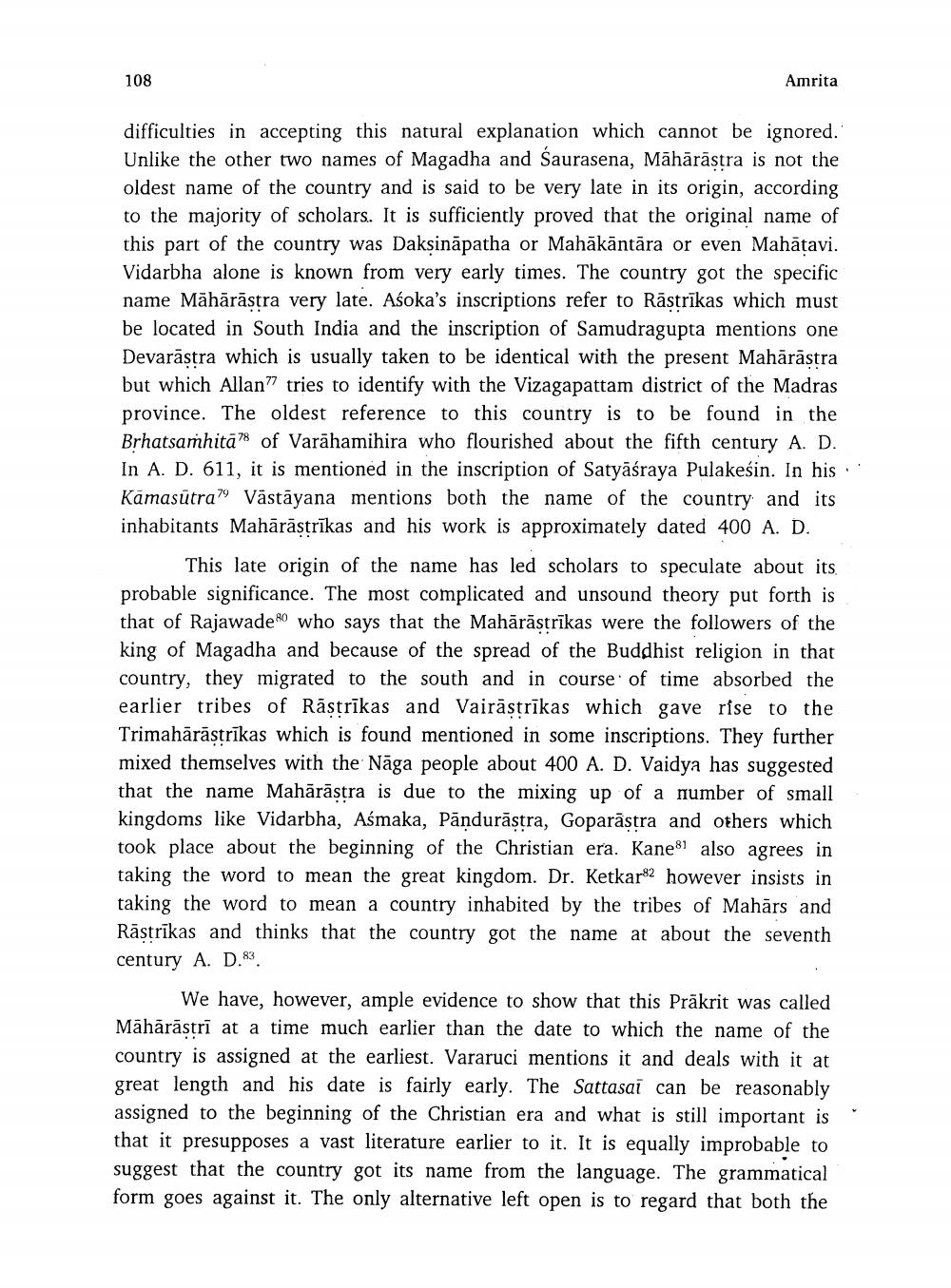________________
108
Amrita
difficulties in accepting this natural explanation which cannot be ignored. Unlike the other two names of Magadha and Saurasena, Māhārāstra is not the oldest name of the country and is said to be very late in its origin, according to the majority of scholars. It is sufficiently proved that the original name of this part of the country was Daksināpatha or Mahākāntāra or even Mahātavi. Vidarbha alone is known from very early times. The country got the specific name Māhārāstra very late. Asoka's inscriptions refer to Rāstrīkas which must be located in South India and the inscription of Samudragupta mentions one Devarāstra which is usually taken to be identical with the present Mahārāstra but which Allan? tries to identify with the Vizagapattam district of the Madras province. The oldest reference to this country is to be found in the Brhatsamhitā78 of Varāhamihira who flourished about the fifth century A. D. In A. D. 611, it is mentioned in the inscription of Satyāśraya Pulakesin. In his Kāmasūtra" Vāstāyana mentions both the name of the country and its inhabitants Mahārāstrīkas and his work is approximately dated 400 A. D.
This late origin of the name has led scholars to speculate about its probable significance. The most complicated and unsound theory put forth is that of Rajawade 80 who says that the Mahārāstrīkas were the followers of the king of Magadha and because of the spread of the Buddhist religion in that country, they migrated to the south and in course of time absorbed the earlier tribes of Rāstrīkas and Vairāstrīkas which gave rise to the Trimahārāstrīkas which is found mentioned in some inscriptions. They further mixed themselves with the Nāga people about 400 A. D. Vaidya has suggested that the name Mahārāstra is due to the mixing up of a number of small kingdoms like Vidarbha, Asmaka, Pandurāstra, Goparāstra and others which took place about the beginning of the Christian era. Kane8 also agrees in taking the word to mean the great kingdom. Dr. Ketkar82 however insists in taking the word to mean a country inhabited by the tribes of Mahārs and Rāstrīkas and thinks that the country got the name at about the seventh century A. D.83
We have, however, ample evidence to show that this Prākrit was called Māhārāstrī at a time much earlier than the date to which the name of the country is assigned at the earliest. Vararuci mentions it and deals with it at great length and his date is fairly early. The Sattasai can be reasonably assigned to the beginning of the Christian era and what is still important is that it presupposes a vast literature earlier to it. It is equally improbable to suggest that the country got its name from the language. The grammatical form goes against it. The only alternative left open is to regard that both the




